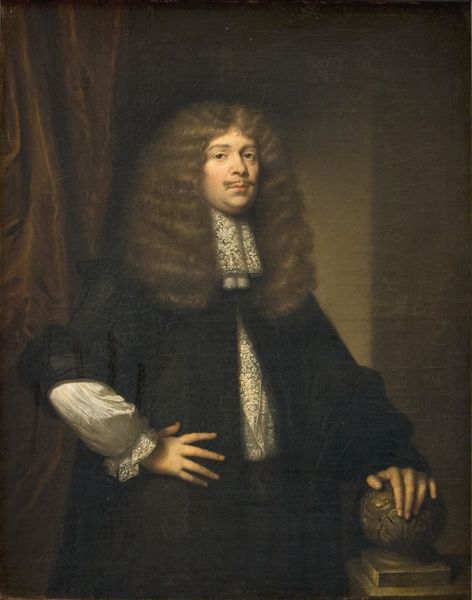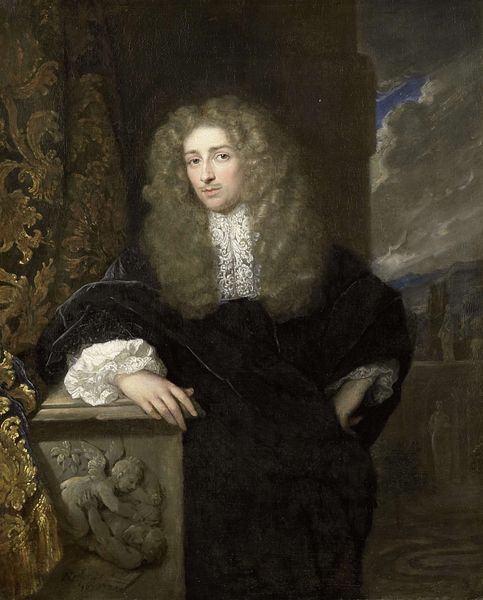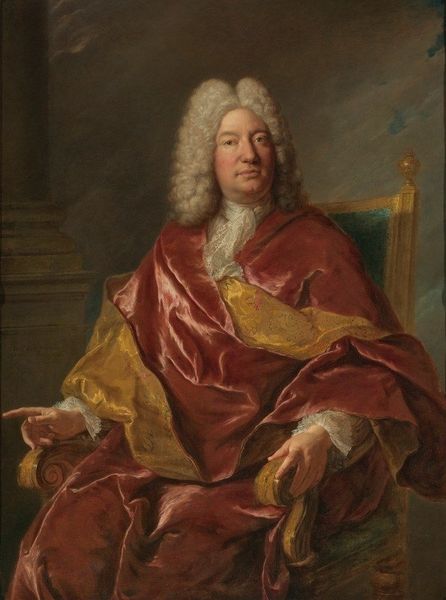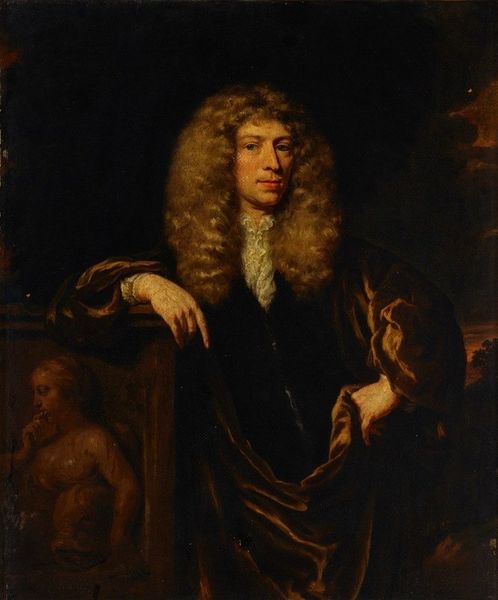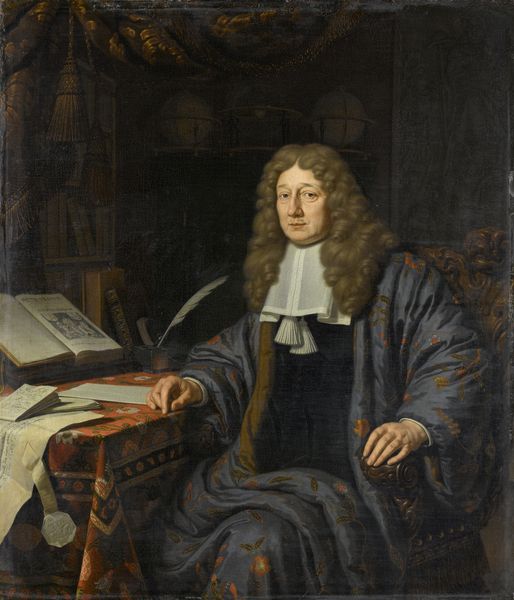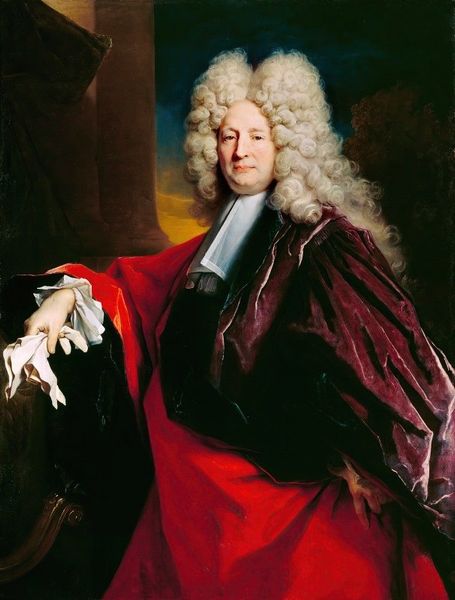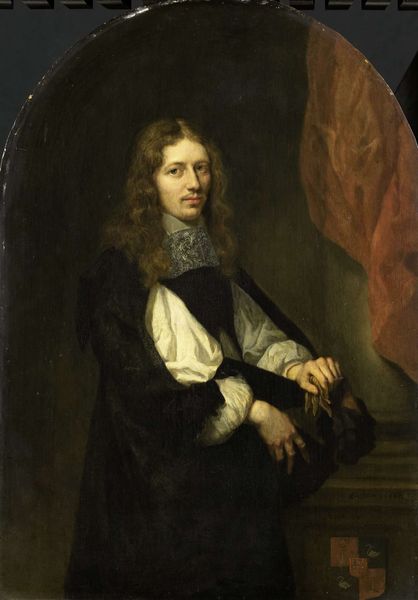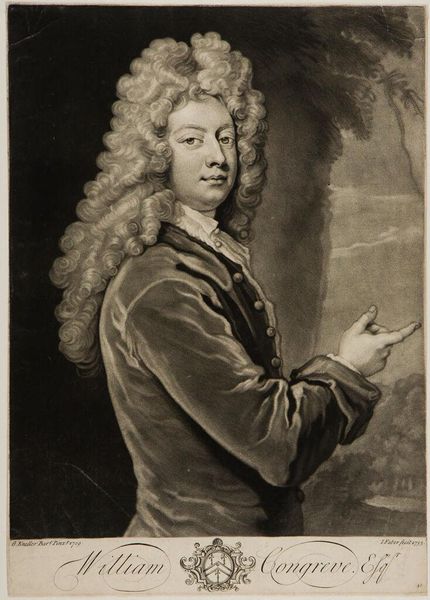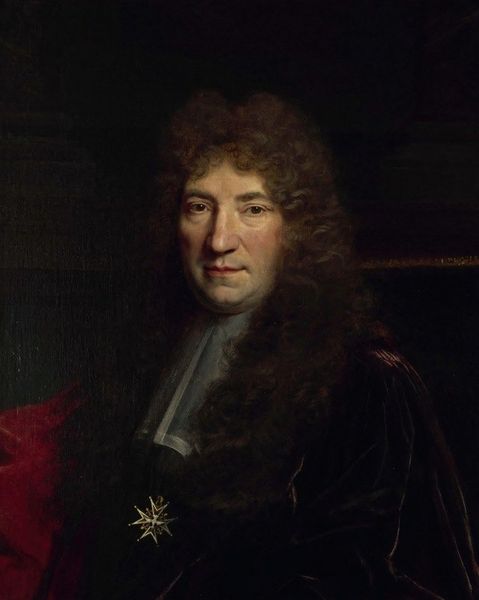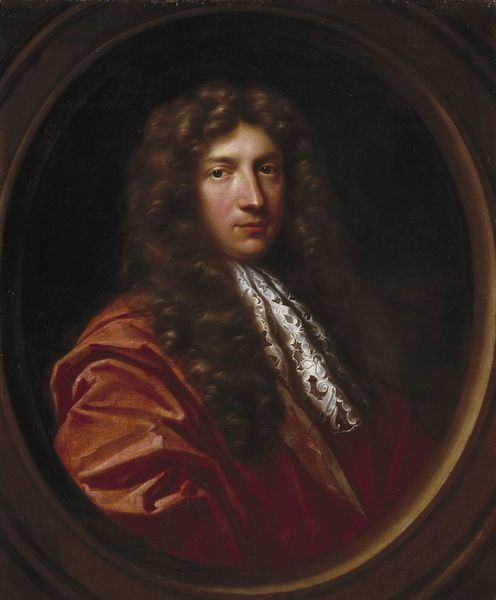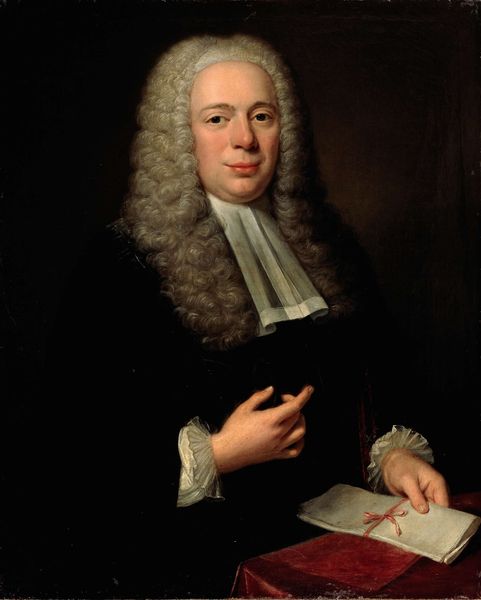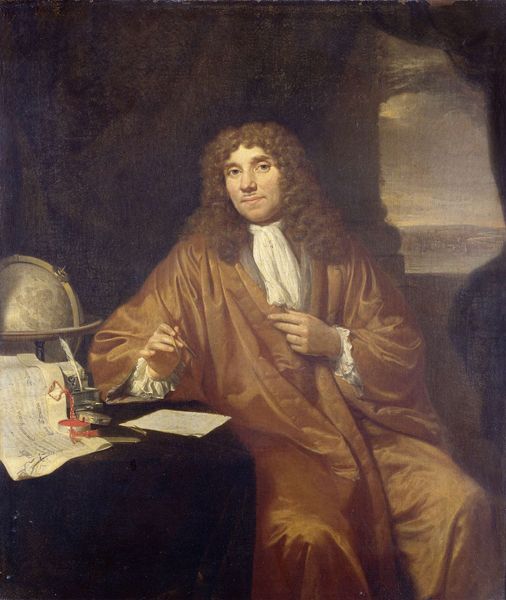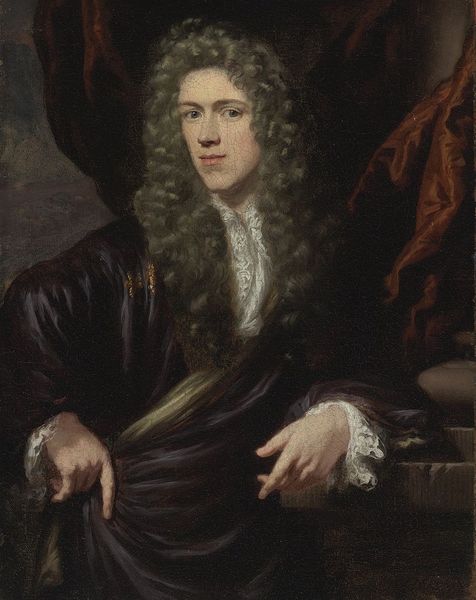
painting, oil-paint
#
portrait
#
figurative
#
baroque
#
painting
#
oil-paint
#
academic-art
Copyright: Public Domain: Artvee
Editor: We're looking at Nicolas de Largillière's "Portrait of Charles-Léonor Aubry, Marquis de Castelnau" from 1701. It’s an oil painting. What immediately strikes me is the sitter's imposing wig. What stories about status and society are woven into this painting? Curator: Indeed, the wig! And the vibrant red robe. This is absolutely about communicating power and status in early 18th-century France. Think about the social function of portraits during this period. Who was commissioning them, and why? Editor: Obviously, the elite could afford to do so, and it seems like the art bolstered their prominence within the social order. Curator: Precisely. The Marquis de Castelnau’s very expensive attire, down to the papers he holds suggesting literacy and probably a connection to the arts or governance. It speaks to the role of art in constructing and perpetuating a particular social hierarchy. Note the idealized background – a romanticized landscape that hints at the sitter’s land ownership and connection to nature. Can we really separate art from propaganda here? Editor: It feels less personal and more like a display of position and affluence. How did Largillière’s artistry support or perhaps subvert the prevailing aristocratic norms? Curator: That's an excellent question. While Largillière clearly caters to his patrons' desires, some art historians argue his skill in capturing the individual's features introduces a certain degree of realism, a hint of humanization beneath the trappings of power. Is he truly capturing an individual, or merely reinforcing a stereotype of nobility? Editor: So, beneath the surface, the artist might be suggesting complexities within the subject's persona? Curator: Precisely! Or, we might see the details as subtle nods to a changing social landscape, where the rising merchant class was beginning to challenge the old aristocracy. This artwork provides an exciting lens into the political and economic dynamics of its time. It highlights the role of visual representation in shaping social perceptions and perpetuating certain power structures. Editor: This has changed how I see the portrait, transforming it from simply decorative into a complex historical document! Curator: Absolutely, seeing portraits like this in the wider political and social environment of their production makes them even more engaging.
Comments
No comments
Be the first to comment and join the conversation on the ultimate creative platform.
